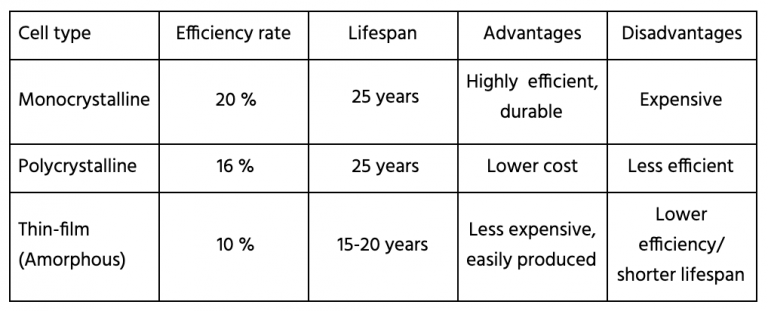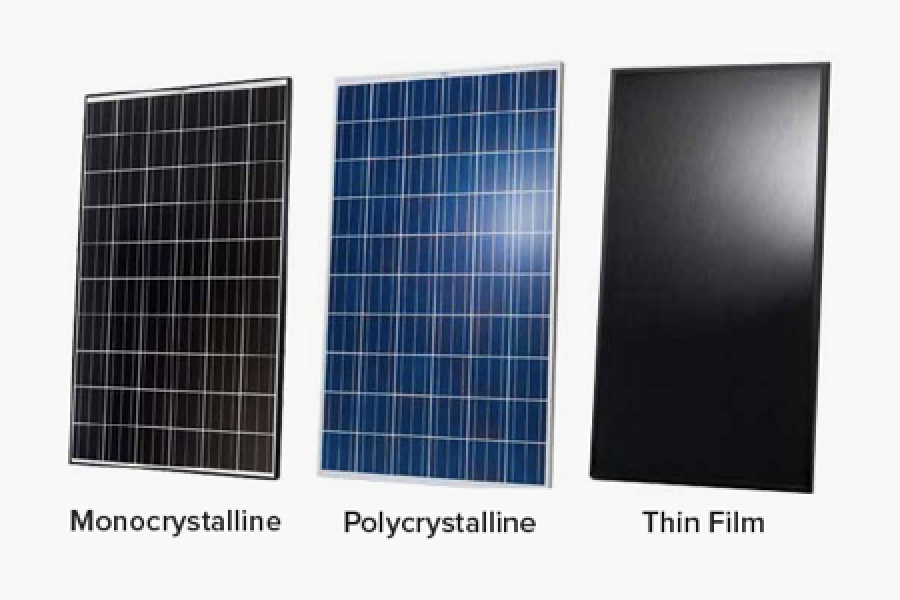The three types of solar panels are monocrystalline solar panels, polycrystalline solar panels, and Amorphous solar panels. Today’s Solar Panels can be traced back to the 19th Century when Alexander Edmond Becquerel discovered the photovoltaic effect and explained that we can generate electricity from sunlight. It then took us 100 more years to invent a solar cell! Shortly after that, we started using solar energy to power Space Satellites and now the International Space Station. Nowadays, solar cells can be produced in a few different ways, providing homeowners with choices. See below the three most popular types of solar panels used by Dallas solar companies and what differentiates them.
Monocrystalline Solar Panels (Mono)
Out of the three types of solar panels, Monocrystalline solar panels are made of monocrystalline silicon. They are the most commonly used solar cells in the residential market.
Thanks to their silicon’s purity, these solar panels are very productive. Their efficiency rate is around 20%. When it comes to high temperatures, the monocrystalline silicon makes the panels incredibly durable and efficient, which slightly influences higher prices. Additionally, the Mono-Si panels have a high-power output and a lifespan of more than 25 years!
Polycrystalline Solar Panels (Poli)
The polycrystalline panels are made by melting raw silicon, which significantly reduces their production time and price. Their efficiency rate is slightly lower than monocrystalline panels, around 16% and (like Mono panels) will last for over 25 years! They are produced differently, so their look differs from monocrystalline panels: they have a blue, speckled look to them. While they may look different, these panels are just as good as monocrystalline panels and are commonly used in the commercial sector.
Thin-Film: Amorphous Silicon Solar Panels
Amorphous panels are produced by placing materials like silicon, copper or cadmium onto a base. The surface color can either be dark blue or black. In comparison to the other types of solar panels Mono and Poli, this kind of panel is cheaper because their manufacturing utilizes less material. Also, thin-film panels are often used for smaller solar power installations and are very flexible, which makes the application highly manageable. They have a lifespan of about 15 years and their efficiency rate reaches 10%. Consequently, you need twice as many amorphous panels to generate the same amount of power as monocrystalline panels.
The table below shows a comparison of three types of solar panels: monocrystalline,
polycrystalline, and thin-film.

These three most common types of solar panels are all advantageous for different reasons, and anyone of them may be the best for your specific needs. For your questions regarding the switch to Dallas solar or about which of the three types of solar panels may be best for you, contact Solartime USA today.
Looking for more information on solar panels? Get a solar panel 101 run down on how they work and the benefits they bring!





